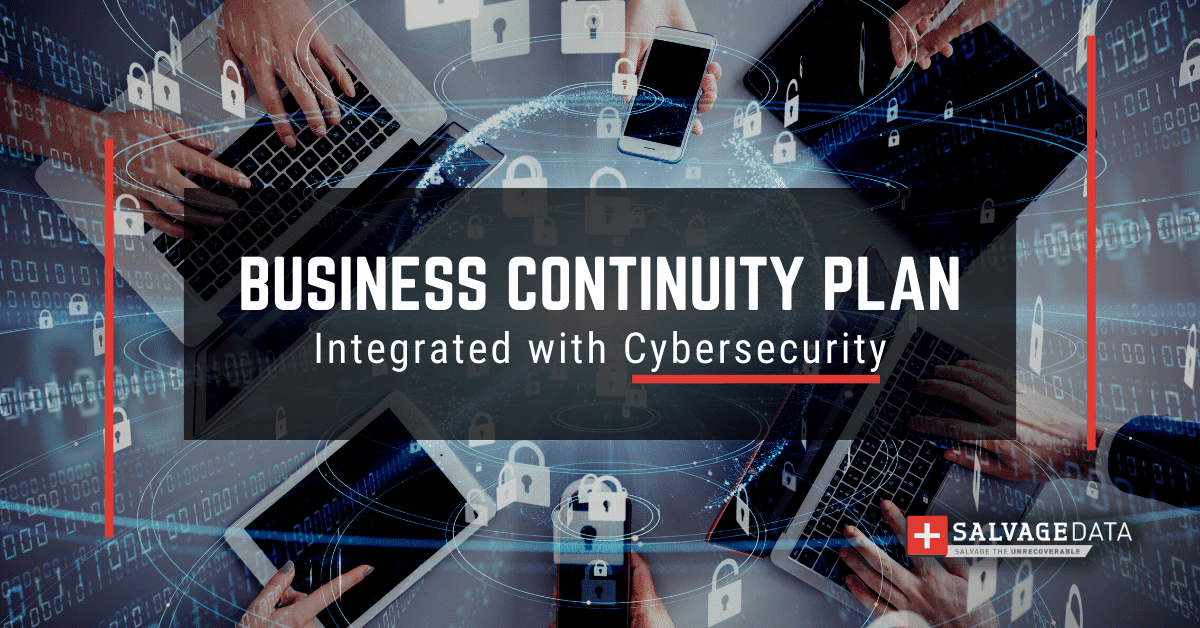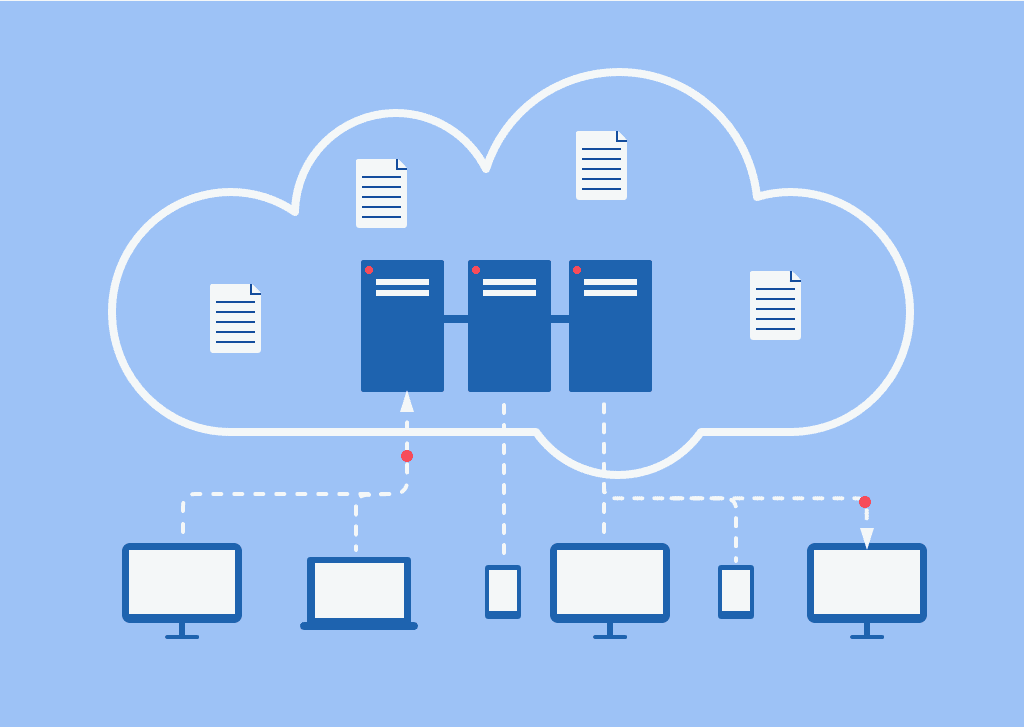Recent Articles
How To Recover Overwritten Files
The Snowflake Data Breach: A Comprehensive Overview
Mac Not Recognizing External Hard Drive: Quick Fix Solutions
How Multi-Cloud Backup Solutions Can Prevent Data Disasters
Capibara Ransomware: What is it & How to Remove
What Should a Company Do After a Data Breach: The Ticketmaster Incident
Secles Ransomware: Removal Guide
What To Do When Your Chromebook Freezes
How to Create Hyper-V Backup
What Is The Best Data Recovery Software For PC

I think there's an issue with my storage device, but I'm not sure Start a free evaluation →
I need help getting my data back right now Call now (800) 972-3282
A Cybersecurity Business Continuity Plan (BCP) is essential for businesses today, as cyber threats are more prevalent than ever. It is an integral part of any company’s overall business continuity strategy and can help to minimize the potential financial losses associated with cyber incidents.
A Cybersecurity BCP outlines how an organization will respond to a cyber incident. This isn’t limited to preventing ransomware attacks, a cyber incident can be as simple as a power outage, and a BCP will help ensure that the right people, processes, and technologies are in place to protect its data, systems, services, and customers.
By creating a comprehensive Cybersecurity Business Continuity Plan, organizations can create an effective incident response plan. This allows them to recover from a cyber incident quickly and efficiently.
What is a business continuity plan?
A business continuity plan is a document that outlines the steps that need to be taken to ensure the smooth running of an organization’s operations during times of disruption.
It includes measures such as having alternate data, systems, and services ready to go. Which allows businesses to keep their operations running even when faced with unexpected outages or disasters.
By incorporating cybersecurity into their BCPs, organizations can identify potential threats and develop effective solutions for addressing them. Additionally, they should also create a Cyber Incident Response Plan (CIRP) as part of their BCP. This plan defines how the company will respond to identified threats and helps ensure that all stakeholders are aware of their roles. This way, companies can quickly contain any incidents and minimize their potential impact.
What is cybersecurity?
Cybersecurity is a combination of technologies, processes, and practices designed to protect networks, devices, programs, and data from attack, damage, or unauthorized access. It helps organizations protect their data from malicious actors by ensuring that their systems are secure against external threats.
Cybersecurity should be a core component of every organization’s BCP as it can help to prevent and mitigate the consequences of cyber incidents.
Creating an effective cybersecurity business continuity plan involves assessing potential risks and developing strategies for addressing them. By doing so, businesses can ensure that they are prepared for any incident that may arise. Besides having a comprehensive plan in place to mitigate the effects of any disruption to their operations.
Thus, when it comes to business continuity and cybersecurity, companies must take a proactive approach to ensure their data is secure and protected against malicious actors.
A comprehensive Cybersecurity BCP will help organizations stay ahead of risks and enable them to respond quickly in the event of an incident.
What is a cybersecurity business continuity plan?
A Cybersecurity Business Continuity Plan is a document created to help organizations mitigate the risks associated with cyber incidents. It includes details such as identifying potential threats, establishing procedures for responding to incidents, and developing strategies for recovering from an incident.
Additionally, it should also include details such as creating an incident response team, outlines for testing recovery scenarios, and data backup plans.
Organizations must remain vigilant and keep up-to-date with the latest cyber threats to protect their data and systems from malicious actors. A comprehensive Cyber Security Business Continuity Plan is essential for businesses today and will enable them to respond quickly and effectively if an incident does arise.
Key components of a cybersecurity business continuity plan
A BCP has some key elements that outline how a business handles incidents. The plan must be tested to ensure it works and that everyone knows their responsibility and what to do in case of an incident.
A comprehensive incident response plan also contemplates cyber threats. Therefore, the key components of an effective cybersecurity BCP will describe the actions to take in any possible incident, from accidental deletion and natural disasters to cyberattacks such as ransomware.
1. Risk Assessment
A risk assessment is the first step in any Cybersecurity Business Continuity Plan, as it helps to identify potential threats and develop strategies for addressing them.
2. Incident Response Plan
Organizations should create a detailed incident response plan that outlines how they will respond to identified threats and what each stakeholder’s role is in the event of an incident.
3. Monitoring Systems
It is important for organizations to regularly monitor their systems for suspicious activity and take appropriate action if needed. This can help them stay ahead of potential cyber incidents and mitigate any damage caused by them before it becomes too severe or disruptive.
4. Data Backup & Recovery Plans
Having a comprehensive data backup and recovery plan in place can help businesses quickly recover from any cyber incident with minimal disruption or losses incurred from it.
5. Employee Training & Awareness Programs
Educating employees on cybersecurity best practices can help organizations reduce their risks of cyber incidents, as they are more likely to spot suspicious activities when they know what to look out for.

6 . Third-Party Verification & Auditing Services
Working with third-party verification services allows businesses to get an outside perspective on their security measures while also ensuring compliance with industry regulations.
SalvageData offers cybersecurity services that can help your business verify your incident response plan and if your network is patched against vulnerabilities. Contact our experts 24/7 for detailed information.
Business Continuity Plan Template
When building your BCP, make sure it contemplates all the following parts.
You must start your business continuity plan by explaining what the document is and then setting the company’s background.
After that, you have to describe the remediation actions in each incident scenario and those that will conduct the recovery process for each step.
- Which are the digital systems and devices that the organization currently has in place
-
-
- Digital systems
- Devices
- Critical systems
-
- Business continuity scenarios
-
-
- Office unavailability
- Natural disasters
- Broadband failure
- Power outage
- Cyberattacks (viruses, malware, ransomware) and data breach
- Failed or stolen device
- The supplier’s system failed
-
- Business continuity plan testing
-
- How to test the plan
- When it must be reviewed and updated
- Who to contact in case of an incident
Fill each topic with your business information and have an integrated cybersecurity business continuity plan.
Cybersecurity strategies for business continuity planning
Organizations should take the time to assess their cybersecurity risks and develop a comprehensive plan to address them. This involves identifying potential threats, such as viruses or malicious actors, and creating strategies for dealing with them.
Additionally, organizations should also create an incident response plan as part of their Cybersecurity BCP. Above all, it outlines how the company will respond to any identified threats. It also helps ensure that all stakeholders are aware of their roles in the event of an incident.
Apply Zero Trust Architecture
Zero Trust Architecture is a security model that can help prevent ransomware attacks. To apply Zero Trust Architecture to prevent ransomware, organizations must adopt a security model that accommodates a distributed workforce and remote work culture.
The guiding principles of Zero Trust Architecture include:
- Continuous verification
- Segmentation
- Least privilege access
- Authentication
- Monitoring
By carefully monitoring all network activities, companies can detect and respond to ransomware attacks in real-time. This can help limit the damage caused by an attack.

Train employees in cybersecurity best practices
Training employees on cybersecurity is essential to prevent cyber attacks, including ransomware. As well as to apply the incident response plan and the cybersecurity BCP.
Invest in employee training so everyone knows their roles during the incident response.
Regularly run vulnerability & penetration testing
The best way to test your company’s security is to try to break it with regular security audits and vulnerability assessments. This can help identify any weaknesses in the company’s security infrastructure and allow for proactive measures to be taken to address them before attackers can exploit them.
A step further is hiring a penetration testing service. This is a simulated attack that is performed by security experts. They apply various hacker-like tactics in order to uncover potential entry points into the system. And also to determine the best mitigation techniques.
Summary
Having a comprehensive Cybersecurity BCP in place is essential to protecting an organization’s data, systems, services, and customers from cyber threats. It ensures that businesses are prepared for any incident.
The plan outlines the necessary steps to prevent, detect, and respond to incidents quickly and efficiently.
For this, organizations should strive to create a plan that will ensure their business continuity regardless of how unpredictable the future may be.













